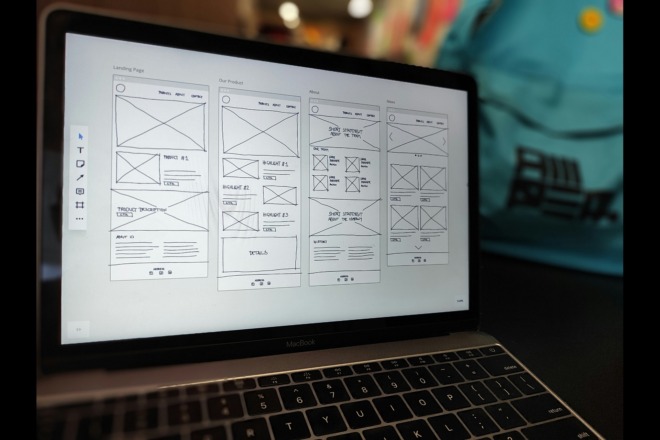Adobe Dreamweaver is often considered the top integrated development environment (IDE) for web development. First released in 1998 on Mac OS, it utilizes a WYSIWYG interface — short for ‘what you see is what you get — that allows you to see the final look of your website in real-time as you create it. Dreamweaver might be one of the best options on the web today, but it’s also expensive. An Adobe Creative Cloud membership — including Dreamweaver and other Adobe products — starts at $54.99 a month for individuals. Dreamweaver, by itself, requires a $20.99 monthly subscription. What are the best alternatives to Dreamweaver if you’re trying to get away from Adobe?
While there are a lot of IDE systems out there for web development, we’re going to focus on programs that offer the WYSIWYG interface. Most of the programs on this list offer free or freemium versions. Those tagged with a $ require a purchase or subscription, but they are still viable alternatives to Dreamweaver.
1. CK Editor
Downloading a handful of web development programs might seem like a hassle for those just getting started. CKEditor eliminates that problem by offering a browser-based rich-text editor. The editor itself is nearly infinitely customizable, giving you options to tweak everything from the color and languages to the dimensions of the editor and the toolbar locations to make it work for you.
CKEditor is an excellent option for anyone building a website to support their existing social media presence. The Media Embed plugin makes it simple to embed social media posts from Twitter, Instagram, YouTube and more.
2. Froala $
While not a free option, if you’re looking for a lightweight WYSIWYG setup for web development, Froala is a fantastic choice. The integrated HTML editor is written in Javascript, giving you access to images and rich text capabilities. It’s easy to use and doesn’t have a steep learning curve like other web development programs you’ll find on the market.
Froala is also a great option if you have an existing website. It provides plenty of tools that make it simple to drag and drop into your current framework. It is an option designed for businesses and individuals who want to invest a lot of money into their online presence. The Pro plan starts at $899 a year and the Enterprise plan will set you back $1,999 a year.
3. Editor.js
You don’t need expensive software to get the job done. Editor.js is one of the best alternatives to Dreamweaver, offering all the tools you need in a free and open-source program. It uses a simple API but is designed to work with various plugins and extensions to customize your overall experience.
Editor.js is a valuable tool for anyone worried about accessibility. In addition to giving you the tools you need to develop your website, it provides clean JavaScript Object Notation (JSON) data for screen readers and other accessibility tools.
4. Setka Editor $
Whether you’re just starting your web design journey or are an experienced designer, Setka Editor is an online platform with all the tools you could ever need. It’s perfect for beginners because you don’t need code writing experience to make the most of this tool. The reusable templates make it easy to keep your site looking uniform while giving it plenty of unique flares.
Interactive content is one of the best ways to promote engagement and get those clicks. Setka Editor provides built-in tools designed to make creating that sort of interactive content simple without needing to learn any additional skills. Setka Editor costs $150 a month for the starter plan and $500 a month for the pro. They offer enterprise plan options, but they are priced on a case-by-case basis.
5. Bubble
Websites aren’t the only thing you might use Dreamweaver for, but thankfully you’re not stuck relying on Adobe products with these alternatives. Bubble is a WYSIWYG tool for developing web-based applications rather than websites. The editor uses a point-and-click interface, so there’s no need to write extra code. It’s the perfect choice for companies that want a web-based application but have neither the skill to build it themselves nor the funds to outsource it.
In addition to the editing and development tools, Bubble handles both deployment and hosting for your finished app. The editor also supports JavaScript plugins and extensions, making it infinitely customizable and scalable.
6. CoffeeCup HTML Editor $
Creating websites quickly doesn’t need to be a hassle. CoffeeCup HTML Editor has all the tools you could need. The Components Library lets you save the tools you often use in a handy location, so you don’t have to keep hunting for them. With their built-in templates, you can import a fully functional website into the editor with a couple of clicks.
Live previews let you see the changes you’re making in real-time, or you can opt for the external preview, depending on your goals. Purchasing CoffeeCup HTML Editor is a one-time expense, unlike many paid options on this list. The editor is $29, while their whole site designing software suite costs $99.
7. Quill
Many of the alternatives to Dreamweaver on this list have the option to add extensions or plugins, but they aren’t a requirement. Quill was designed from the ground up with those options in mind. Customization is the order of the day with this program. Start with the core and tweak it until it meets your website or business’s needs.
Quill has two built-in themes that let you change the look and feel of your editor. It also supports the creation of interactive content, which is so important when running a website or domain in 2022.
8. Summernote
For sites that use a combination of Bootstrap and jQuery — or just jQuery by itself — Summernote is a rich-text editor with all the tools you could need. Use the built-in templates to add or modify websites or customize the program to your heart’s content with plugins and downloadable modules.
In addition to its customizability, Summernote works with various existing frameworks, from Django and Ruby on Rails to Apache Wicket and Meteor. It’s the perfect tool for creating new websites or modifying existing ones.
9. Brackets
Brackets began life as an Adobe project but has evolved into a stand-alone open-source editor that serves as one of many alternatives to Dreamweaver. Like most of the options on our list, in addition to its base features, Brackets offers nearly limitless customizability as well as a user-friendly interface that doesn’t have a significant learning curve.
One of Brackets’ best features is its live preview function, allowing you to see the results of your change in real-time before the site goes live. You can also create a Working Files list that lets you switch between tasks efficiently without having to open and close separate editors.
10. TinyMCE $
If you search for WYSIWYG editors on Google, TinyMCE is one of the top results. This rich text editor is perfect for all skill levels, offering everything from a basic editor to a customized interface that you’ve tweaked to meet all your needs. The core of the program is free and open source. It gets a $ tag for its premium add-ons which you’ll need to make the most of the platform.
TinyMCE is an excellent choice for businesses who want to invest in an easy-to-use collaborative platform for web design and development but don’t want to work with an Adobe product.
11. BlueGriffon
BlueGriffon is a WYSIWYG HTML and CSS editor that offers a mix of user-friendliness and power. As an open-source editor, it provides an ideal programming environment for developers. For instance, BlueGriffon has a large library of templates to help you get started in your page design.
BlueGriffon also has an easy-to-use interface, making navigation simple and saving more time. Its design is like traditional word processing with more tools specific to web design. Additionally, BlueGriffon has a feature known as “web rolling.” This feature allows you to edit documents in a web browser and embed them into a different webpage. This editor makes an excellent choice for those needing to collaborate with other developers and designers.
12. BlueFish
BlueFish is an efficient editor for developers who crave more control. It supports many languages, document interfaces and search tools. It has a simple GUI (Graphical User Interface) that works on almost any platform. Plus, it is easy to find and install, which can be an issue with some editors.
You may like BlueFish because it has code folding, search and replace functionality and auto-completion. Having these features will enhance your web development process and make it seamless.
When compared to Dreamweaver, BlueFish allows you to focus on the code itself. So, it’s a great choice for those who prefer diving into code rather than design.
13. Aptana Studio
Aptana Studio is another open-source tool packed with HTML, CSS and JavaScript features. This editor is perfect for developers because it’s fast and customizable. You can build web applications quickly using IDE — a leading software for efficient coding.
Aptana Studio also streamlines your workflow with its integrated debugger and Git integration. It even has the flexibility of Eclipse, making it a powerful development tool. It has many built-in features such as deployment wizards, terminal and code assist. This software supports the previewing and building of website development. Thus, the launching of your web projects will be seamless.
Dreamweaver is heavyweight when it comes to its toolset. If you wish to build web apps more quickly, Aptana Studio would better suit you — its environment is designed around productivity. Plus, it’s free, providing you with significant cost savings for your budget.
14. SeaMonkey
SeaMonkey is a free, open-source software with an all-in-one internet application suite. It comes from the same roots as Mozilla Firefox and Thunderbird, with much more to offer. This editor contains advanced email and chat functionality with HTML editing made simple.
SeaMonkey is popular among developers due to its intuitive design and interface. While the interface is much like Mozilla Firefox’s browser, it is still lightweight and portable.
When editing with SeaMonkey, you can synchronize your work in visual mode or on an HTML editor. Yet, Dreamweaver allows you to edit in both modes in different windows simultaneously. Overall, SeaMonkey offers an integrated solution for web browsing, communication and development. If you’re after a multi-faceted tool with a user-friendly HTML editor, SeaMonkey is it.
15. Visual Studio
Visual Studio is Microsoft’s IDE — a powerful, lightweight code editor for creating web applications on your desktop. Among its standout features, you get built-in support for Node.js, TypeScript and JavaScript. The software also provides you with debugging tools and built-in Git commands.
Moreover, it has IntelliSense. This makes code completions based on variable types, function definitions and imported modules. Therefore, it is a true time-saver in your development projects.
Visual Studio shines with its expansive toolset and strong performance. It provides broad functionality for software development in multiple languages. Yet, if it’s missing your favorite language, you can add basic support through TextMate colorizers.
16. Sublime Text
Sublime Text is an app development software known for its speed and efficiency. It provides a clean interface you’d find inviting and offers many features to streamline your coding process.
For example, its one feature is the “Goto Anything” function. With a simple keystroke, developers can quickly jump to files, lines or symbols and speed up their workflow considerably. Another feature you may love as a web developer is its auto-complete functionality. The software creates code suggestions to use and will provide links automatically.
Another advantage of Sublime Text is its library of plugins. While it lacks support for direct installation, you can install plugins to expand the software’s capabilities. Moreover, its multiple selections feature allows developers to change many lines at once, making this tool a huge time-saver.
17. Atom
Atom is a free, open-source text editor developed by GitHub. Its tagline, “A hackable text editor for the 21st century,” truly captures its essence. Atom is designed to be fully customizable, allowing developers to adjust the editor to their needs.
One feature of Atom that web developers like is its integration with Git and Github. This makes version control and collaboration much easier for developers. Furthermore, Atom has a large community with a rich selection of plugins and themes. In turn, you have the advantage of enhanced functionality on the platform.
When web developers use Atom, they say it has an excellent UI, making it enjoyable to use. It also offers a visual file system that allows you to browse and open files more quickly. Yet, what sets Atom apart is its being lightweight. Users praise Atom for being ready to use with everything set up and ready to go.
18. WebStorm
WebStorm is another Dreamweaver alternative that JetBrains created. This IDE for web development deserves mention because of its deep coding assistance and support for modern web technologies. WebStorm was designed with an intelligent code completion.
This feature anticipates and suggests the next piece of code you’ll need. In turn, developers code faster and make their creations less prone to error. It also provides advanced debugging and testing tools, ensuring your websites and apps are functional and working efficiently.
Another highlight of WebStorm is its integration with popular tools and frameworks like React Angular and Vue.js. Developers can access the latest coding assistance tools to build the best web applications. Therefore, WebStorm ensures you’re working in a coding environment that’s up-to-date and seamless.
19. NetBeans
NetBeans was initially known for its Java development capabilities but has evolved into an IDE. It’s a free, open-source platform that offers tools that compare well to Dreamweaver’s functionality and depth. For instance, NetBeans has extensive support for multiple programming languages, including PHP, HTML5, Javascript and CSS.
This means developers can work on different project parts without switching between tools. Additionally, NetBeans has an easy-to-use interface. With code editors that provide hints and quick fixes, developers have a system that makes their process work smoothly.
NetBeans also has built-in support for version control systems like Git, Mercurials and Subversion. Therefore, you get seamless collaboration and version tracking. Plus, it has visual debugging tools to find and solve issues easily.
20. Pinegrow
Pinegrow is a visual website editor that allows users to build responsive sites faster and more easily. Pinegrow differs from traditional text editors — it provides a graphical interface where developers can view and edit the live pages and the code side by side.
One of the most prominent features of Pinegrow is its drag-and-drop functionality. Developers can create layouts, style elements and add various components without writing a single line of code. However, you can still dive into the code if you prefer. Pinegrow ensures the HTML and CSS remain clean and easily editable.
The website builder also lets you create responsive designs. With its visual tools, developers can easily adjust layouts for various screen sizes. That way, you can make sure your websites look great on all devices.
Best Alternatives to Dreamweaver
Adobe might have some of the best-known products on the market, but that doesn’t mean you’re locked into their Creative Cloud if you’re looking for a tool for web design. There are plenty of alternatives to Dreamweaver available if you’re willing to look.


